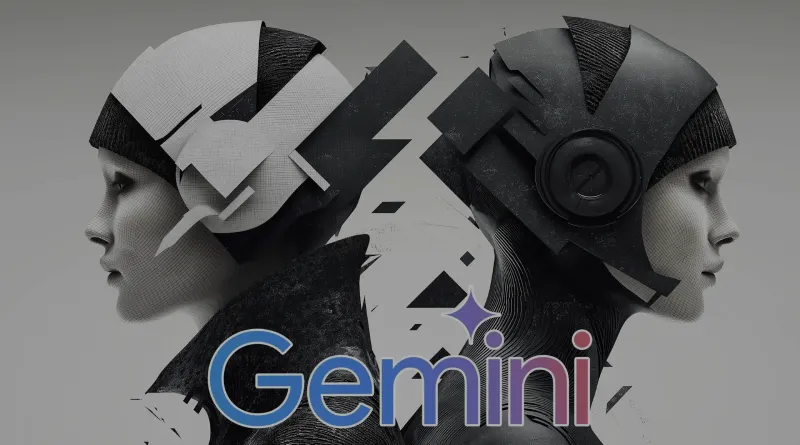Google’s Gemini Embedding Model: Empowering Developers Worldwide
On July 14, 2025, Google unveiled its Gemini Embedding model, known as gemini-embedding-001, making it accessible to developers globally through its advanced AI platforms. Initially tested in March 2025, this model has secured a leading position on the Massive Text Embedding Benchmark (MTEB) Multilingual leaderboard, surpassing Google’s earlier models and other commercial alternatives. With support for over 100 languages and a design focused on cost efficiency, Gemini Embedding is set to revolutionize applications like search, classification, and recommendation systems, particularly in diverse markets like India. This article explores the model’s standout features, its transformative potential, and its significance for developers in India and beyond.
A New Standard in Text Embedding
Gemini Embedding converts text into numerical forms and therefore has the capability to be used in semantic search, text classification, and clustering of the contents. This device, unlike the others by Google, is a success in a wide variety of fields, such as science, finance, legal, and software advancements. It can process multilingual or complex data; thus, it is a universal tool the globe can use. Based on the technical reports of Google, they have outpaced the competitors in retrieval, classification, and semantic similarity experiments, and this has set a new scorecard about embedding technology.
An important innovation it applies is the Matryoshka Representation Learning (MRL), where developers can select output dimensions that fit optimally, i.e., that enable performance optimization and efficient use of resources (768 to 3072). Large dimensions provide better accuracy in precision-based tasks, whereas small dimensions are less costly in terms of computations and less in storage, making them the best for startups and small businesses. Being able to process text data as large as 2048 tokens, the model can serve significant data processing requirements, such as summarization of documents and improvement of chatbots. This is because in India, 90 percent of the internet users use mobile devices (IAMAI, 2024), making its flexible nature adequate to work effectively on resource-constrained devices.
Accessibility for Developers
Google has also publicized Gemini Embedding so that it is available at a free and at a paid level and available to a broad range of customers. The free, or rather, free-trial service allows developers to perform tests without incurring any cost, yet the paid services are more sufficient when it comes to creating production environments. The model will be offered at the price of 0.15 dollars per million input tokens, which is even quite competitive and affordable for a large-volume application. Another feature will also be the asynchronous batch processing that will further reduce the costs of doing big data jobs, and this will be useful to the Indian businesses that deal with large volumes of data, including e-commerce services and educational applications.
The fact that the model fits in the AI ecosystem of Google also means that it will be easy to use, and extensive documentation will be provided to developers. This accessibility plays a pivotal role in India, where it is estimated that the talent base of tech will have attained 12 million by 2030 (NASSCOM, 2024). Nevertheless, application developers working with previous experimental versions need to move to them by August 14, 2025, when the legacies will be evicted, and this will guarantee that projects take advantage of the most current developments.
Driving Impact in India’s AI Landscape
The AI market in India will be worth 12 billion in 2024 and, according to estimates, may grow twofold in half a decade (FICCI, 2024). The country is an innovation center, and Gemini Embedding is perfectly positioned to develop the AI market in India. Its provision of more than 100 languages, such as Hindi, Tamil, and other Indic languages, is in line with the linguistic diversity in India, where 60 percent of internet users want regional content (IAMAI, 2024). In the case of Indian edtech companies such as Seekho, the multilinguality of the model may allow SQLPLUS-Data to be used to benefit segmented learning and recommendation that would provide better user participation.
Where frequently traded models, such as those in e-commerce or financial services, deploy search functions or customer relation support systems, the retrieval accuracy of Gemini Embedding can be used to optimize those functions. As an illustration, an Indian online retailer can deploy it to enhance the accuracy of product searching, which brings a possible 20-30 percent improvement in conversions, as in AI applications of this type (McKinsey, 2024). It can also be helpful to the banking and financial services industry in India, where text analysis capabilities can be useful in such tasks as KYC compliance and fraud detection in structured data.

Strategic Advantages and Future Outlook
The launch of Gemini Embedding by Google indicates the departure towards dedicated AI models used in businesses. In contrast to excessive, consumer-centered models, gemini-embedding-001 is more efficient, which is a relatively inexpensive option in the Indian variant of the market with price-sensitive users, where 3 out of 4 SMEs focus on cost-effective technologies (FICCI, 2024). The sustainability is also facilitated by the MRL approach incorporated by it, as energy is saved in this way, and this idea correlates with the goals of India regarding green technology with the India AI Mission.
Going forward, Google envisions increasing the capabilities of the Gemini Embedding, including the possibility of adding image and audio embeddings to support multimodal use cases such as enhanced search and multimodal content creation. The batch processing capability, which should be a part of the project, will help to scale it by providing Indian businesses with the ability to examine large volumes of data to receive insights about the market and consumer patterns. With the goal of India becoming a 10-percent contributor to worldwide AI GDP by 2030 (NITI Aayog, 2024), Gemini Embedding tools will become a central factor in placing the state on the track towards innovation.
Challenges to Consider
Gemini Embedding has its limitations in spite of its strengths. Its 2048-token input constraint can limit functions related to longer writings, e.g., legal document processing. Also, software developers moving to legacy models should have a comprehensive plan that would interfere with the work of the day and thus should consider the resources available to the Indian startups. Even though there is still competition with such models as text-embedding-ada-002 created by OpenAI, the features of supporting other languages and cost-effective performance provide the embarking of Gemini Embedding as an advantage.
Why Gemini Embedding Matters
Gemini Embedding empowers developers to create smarter, more inclusive applications, from enhanced search engines to personalized educational platforms. Its multilingual capabilities, affordability, and enterprise-grade performance make it a game-changer, especially in India’s rapidly digitizing economy. As Google continues to innovate, this model sets a new standard for AI-driven development, offering a future where technology is both powerful and accessible to all.
Disclaimer
The information presented in this blog is derived from publicly available sources for general use, including any cited references. While we strive to mention credible sources whenever possible, Web Techneeq – Website Development Company in Mumbai does not guarantee the accuracy of the information provided in any way. This article is intended solely for general informational purposes. It should be understood that it does not constitute legal advice and does not aim to serve as such. If any individual(s) make decisions based on the information in this article without verifying the facts, we explicitly reject any liability that may arise as a result. We recommend that readers seek separate guidance regarding any specific information provided here.

